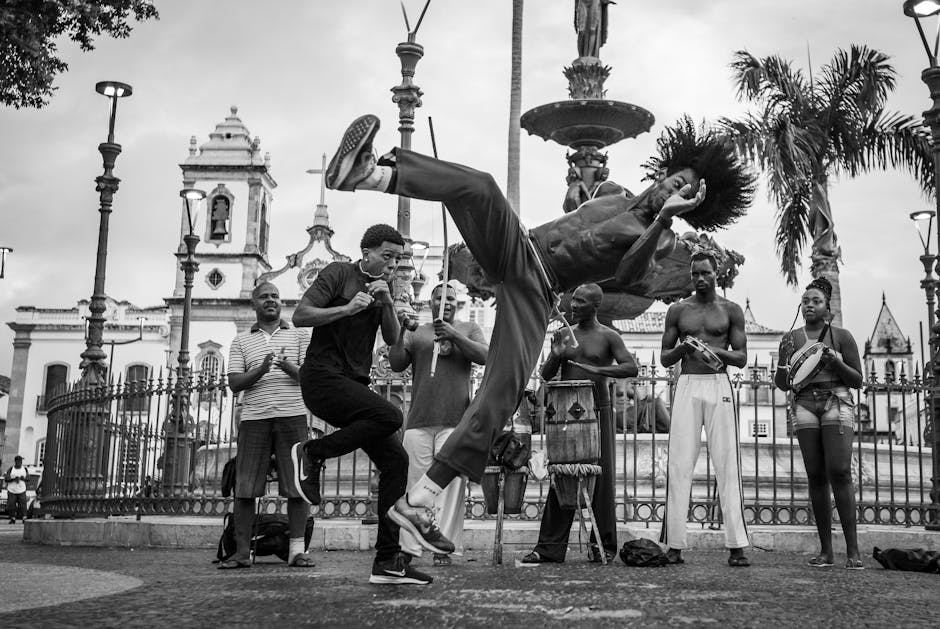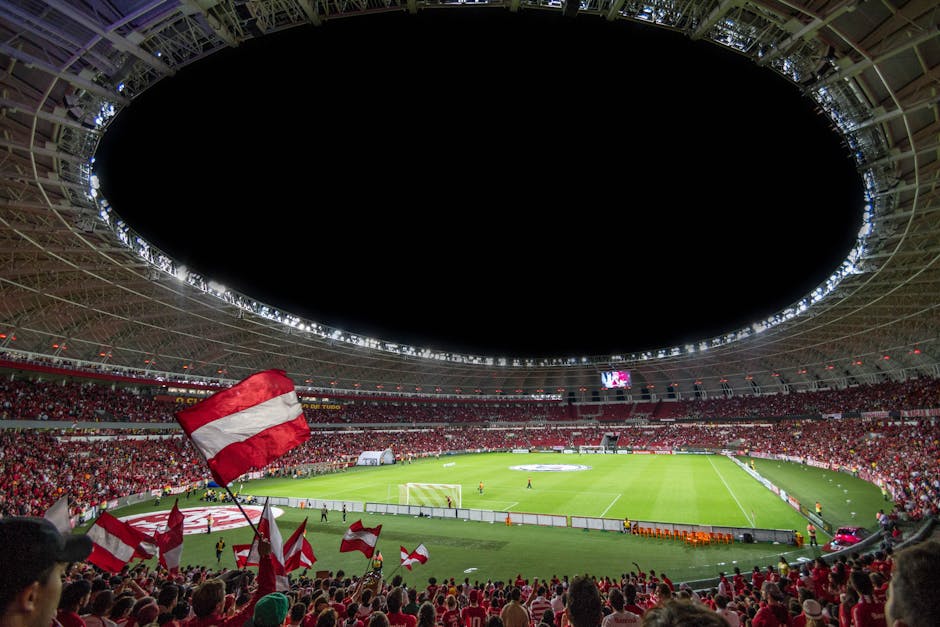- Step into a Living, Breathing Storybook
- The Echoes of the Past: Understanding Pelourinho’s Name
- The Heartbeat of Bahia: The Rhythms of Olodum and Samba
- Terça da Bênção: The Unmissable Tuesday Blessing
- Faith and Syncretism: Candomblé Meets Catholicism
- A Taste of Africa in Brazil: The Flavors of Pelourinho
- The Queen of the Street: Acarajé
- The Dance of Liberation: Capoeira in the Praças
- Deeper Dives: Essential Cultural Hubs
- Tips for Soaking It All In
Step into a Living, Breathing Storybook
Imagine stepping onto cobblestone streets so steep and winding they feel like a journey back in time. The air is thick with the sweet, nutty aroma of dendê oil, and from an open doorway, the powerful, syncopated rhythm of drums spills out, seeming to vibrate right through your bones. All around you, a kaleidoscope of pastel-colored colonial buildings—sky blues, sunny yellows, soft pinks—lean against each other under the warm brazilian sun. This isn’t a theme park; it’s Pelourinho, the historic heart of Salvador, Bahia, and the soul of Afro-Brazilian culture.
Walking through Pelourinho, often called ‘Pelo’ by locals, is an immersive experience. It’s a place where every corner tells a story, every beat of the drum echoes a history of resilience, and every smile invites you to be part of its vibrant present. It’s more than just a UNESCO World Heritage site; it’s a living museum, a spiritual center, and a non-stop celebration of life. Ready to explore?
The Echoes of the Past: Understanding Pelourinho’s Name
Before we dive into the joyous culture that defines Pelourinho today, it’s crucial to understand its history. The name itself, ‘Pelourinho,’ translates to ‘whipping post.’ This was the central square where enslaved Africans were brought to be punished publicly. From the 16th to the 19th century, Salvador was the first capital of colonial Brazil and the largest slave port in the Americas. The wealth that built these magnificent churches and grand mansions was generated by the forced labor of millions of Africans.
It’s a harrowing and heavy truth. Yet, what makes Pelourinho so incredibly powerful is its transformation. The very ground that once symbolized oppression has been reclaimed. It has evolved into a symbol of Black resistance, pride, and cultural affirmation. The music, art, religion, and food that flourish here are all testaments to the enduring spirit of the Afro-Brazilians who not only survived but also shaped the identity of an entire nation. To walk through Pelo is to witness this incredible story of resilience firsthand.

The Heartbeat of Bahia: The Rhythms of Olodum and Samba
You can’t talk about Pelourinho without talking about music. It’s the district’s lifeblood. The most famous sound is the thunderous beat of samba-reggae, a genre pioneered right here by the world-renowned cultural group, Olodum. You might recognize their sound from Paul Simon’s “The Rhythm of the Saints” album or Michael Jackson’s iconic music video for “They Don’t Care About Us,” which was filmed right in these streets.
Terça da Bênção: The Unmissable Tuesday Blessing
If you can, plan your visit for a Tuesday. This is the night of the Terça da Bênção (Tuesday of the Blessing). The whole neighborhood erupts into a massive street party. The highlight is the Olodum rehearsal, where hundreds of drummers, dressed in their signature colors, take to the streets for an open-air performance that is nothing short of electrifying. The energy is contagious. You’ll find yourself dancing alongside locals and travelers, swept up in a collective wave of pure joy and rhythm. Beyond Olodum, you’ll also hear the sounds of Afoxé, the sacred music of Candomblé, and see impromptu circles of Samba de Roda, a more traditional form of samba that is also a UNESCO Intangible Cultural Heritage.
Faith and Syncretism: Candomblé Meets Catholicism
Salvador’s spiritual landscape is as unique as its music. Here, African and European traditions didn’t just coexist; they merged. Enslaved Africans were forbidden from practicing their own religions, so they cleverly disguised their deities, the Orixás, as Catholic saints. This syncretism is the foundation of Candomblé, a beautiful and complex Afro-Brazilian religion that is openly and proudly practiced today.
A perfect example of this is the stunning Igreja de Nossa Senhora do Rosário dos Pretos (Church of Our Lady of the Rosary of the Black People). This sky-blue church, located right in the heart of Pelourinho, was built over nearly 100 years by and for enslaved and freed Africans who were not allowed to worship in the city’s other grand churches. The services here are unique, often incorporating African rhythms and music into the Catholic Mass. It’s a moving testament to faith and the creation of a unique cultural and spiritual identity.
A Taste of Africa in Brazil: The Flavors of Pelourinho
Your senses will be on high alert in Pelourinho, and your taste buds are in for a treat. The cuisine of Bahia is heavily influenced by West African culinary traditions, with key ingredients like dendê (palm oil), coconut milk, and bold spices.
The Queen of the Street: Acarajé
You cannot leave Pelourinho without trying acarajé. This iconic street food is made from a batter of black-eyed peas, formed into a ball, and deep-fried in dendê oil until it’s crispy on the outside and fluffy on the inside. It’s then split open and filled with vatapá (a creamy shrimp paste), caruru (an okra stew), fresh salad, and fiery pepper sauce. More than just a snack, acarajé has deep religious significance in Candomblé as an offering to the Orixá Iansã (goddess of winds and storms). The women who sell it, known as Baianas de Acarajé, are cultural treasures themselves, dressed in traditional white lace dresses, colorful beads, and head wraps.
The Dance of Liberation: Capoeira in the Praças
As you wander, you’ll almost certainly come across a roda de capoeira (capoeira circle). What might look like an acrobatic dance is actually a complex and beautiful martial art. Developed by enslaved Africans, capoeira was a form of self-defense disguised as a dance to fool their captors. It’s a game of wit, strength, and agility, played between two capoeiristas inside a circle of musicians playing the berimbau and other traditional instruments.
The movements are fluid, almost hypnotic, flowing from graceful cartwheels to lightning-fast kicks. Watching a roda in a Pelourinho square, with the historic buildings as a backdrop, is an unforgettable experience. It’s a powerful, living demonstration of how art and culture were used as tools for resistance and survival.
Deeper Dives: Essential Cultural Hubs
While the streets themselves are the main attraction, several museums and cultural centers offer deeper insights into the Afro-Brazilian experience.
- Museu Afro-Brasileiro (MAFRO): Located in the building of Brazil’s first medical school, this museum houses an incredible collection of artifacts, art, and exhibitions detailing the history of the African diaspora in Brazil. The carved wooden panels depicting the Candomblé Orixás by artist Carybé are a must-see.
- Casa do Carnaval da Bahia: A modern and interactive museum dedicated to the history and culture of Salvador’s world-famous Carnival. It’s a fun and vibrant way to understand the musical evolution of the city.
- Fundação Casa de Jorge Amado: This cultural center is dedicated to one of Brazil’s most famous authors, Jorge Amado, whose novels vividly brought the culture and characters of Bahia to life for a global audience.
Tips for Soaking It All In
Ready to make the most of your visit? Here are a few tips to guide your exploration of Pelourinho:
- Wear Comfortable Shoes: Those charming cobblestones are no joke! You’ll be doing a lot of walking, often up and down steep hills.
- Embrace the Energy, but Stay Aware: Pelourinho is a bustling place. While it’s generally safe during the day, it’s wise to be aware of your surroundings, especially after dark. Stick to well-lit main streets and consider taking a taxi or ride-share back to your accommodation at night.
- Bring Cash: While many shops and restaurants accept cards, many street vendors, artists, and small cafes prefer cash (Reais).
- Say Yes to the Baianas: When a Baiana offers you a fitinha (a colorful wish bracelet from the Senhor do Bonfim church), it’s a lovely local tradition. They will tie it on your wrist with three knots for three wishes. It’s customary to give them a small tip in return.
- Just Wander: While it’s great to have a few sights in mind, the best way to experience Pelourinho is to simply get lost. Wander down the narrow alleys, peek into art galleries, listen to the music, and let the spirit of this incredible place guide you.




